GUIDE GUIDE

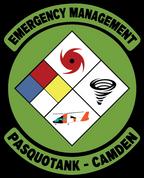
ALL-HAZARDS ALL-HAZARDS PREPAREDNESS PREPAREDNESS KNOWYOURRISK MAKEAPLAN STAYINFORMED GETINVOLVED The All-Hazards Preparedness Guide was designed by Pasquotank-Camden Emergency Management to provide our residents and visitors the tools of All-Hazards Preparedness and to serve as a resource throughout the year. Cover photo: Elizabeth City Skyline from the Albemarle Sound | Photo Credit: Visit Elizabeth City For more information on all-hazards preparedness, visit www.pasqcamem.wixsite.com/main
Did You Know?
The2023HurricaneSeason:
• The Atlantic Basin saw 20 named storms in 2023, ranking 4th for most-named storms in a year.
• Hurricane Idalia was the only U.S. landfalling hurricane in 2023. Made landfall as a category 3 on August 30th near Keaton Beach, Florida.
• The 2024 Hurricane Season is predicted to be 170% above average due to entering into a La Nina pattern and historically warm water.
• The NHC is predicting 23 storms with 11 being hurricanes, and 5 hurricanes reaching category 3 or higher for 2024.
Know Your Zone
There are several ways to find out your evacuation zone: pasqcamem.wixsite.com/main knowyourzone.nc.gov (252) 335-4444


Tropical depressions, tropical storms and hurricanes are considered tropical cyclones. When sustained, or constant, winds reach 74 miles per hour (mph), the storm is considered a hurricane. The storm categories are based on wind, with Category 1 (up to 95 mph), up to a Category 5, which is 157 mph or higher Hurricanes usually form during hurricane season, which runs June 1 to Nov. 30. Tropical storms and hurricanes can include high winds and flooding from heavy rainfall, storm surge and hazardous surf. The effects can be felt hundreds of miles from the center of the storm. If a storm threatens our area, you will find real-time information on the Emergency Management Facebook at facebook.com/pasqcamem, including evacuation orders, shelters that may have opened and the current status of the community.
Hurricanes StormSurge
For more than 50 years, hurricanes have been given human names. While this is done to help identify individual storms, it turns out that each hurricane is as individual as its name Hurricanes come in different sizes and shapes and often display very different behaviors. It is important to understand these differences as you prepare. The National Oceanic and Atmospheric Association (NOAA) notes that a big mistake people make in preparing for hurricanes is to assume that just because you’ve been affected in a certain way by one hurricane, every storm will affect you the same way.
A hurricane has the following characteristics:
•74 mph or higher winds.
•Can be hundreds of miles wide
•Spins counter-clockwise around the eye.
For more information about hurricanes and the potential threats associated with them, current systems being monitored and historical information, go to the National Hurricane Center’s website at nhc.noaa.gov.
Storm surge is a dome of water that is pushed ashore by powerful winds. Storm surge can be life-threatening and cause extensive damage and not just along the immediate coastline It is important to know your risk from storm surge and determine if you live in an area that may be called to evacuate. The National Hurricane Center issues watches and warnings if there is a threat to Pasquotank or Camden County To see how high storm surge could be at your location, visit the Storm Surge Risk Map https://www.nhc.noaa.gov/nationalsurge/# map
• Determine if you live in an area that may be impacted by surge.
• Monitor the impact of storm surge on your area
• Know if your location is included in the evacuation order.
What’sinaName?
Protectivemeasures:

As of 2021, some proper evacuation zone level due maps. You can find your z there was a change at kn
Know Your Zone is a coastal counties that areas most vulnerable tropical storms and o
When a storm is appr which zones are most evacuate. Higher risk evacuated first, follow approach is used in o the evacuation period


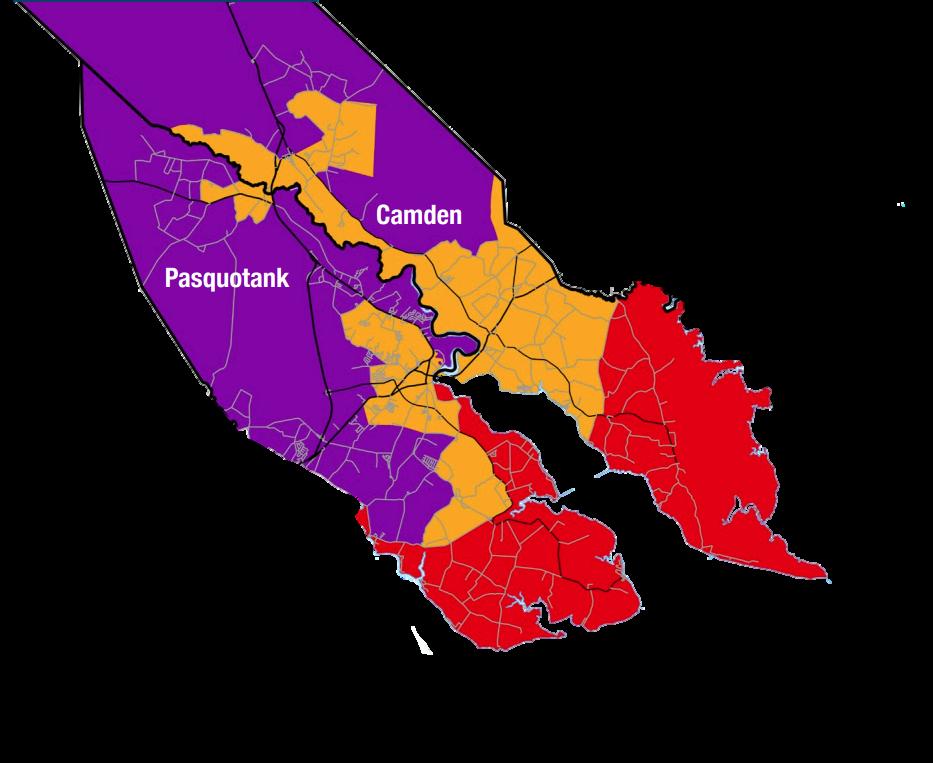


Lo Kno My County is: _____________________________________________ My Zone is: ________________________________________________
Zone
Major Road
A Zone C Zone B
FLOOD
Flooding can occur from excessive rainfall due to tropical cyclones, seasonal rain, or other weather patterns and conditions. Pasquotank and Camden counties are highly susceptible to flooding, including inland flooding (stream, creek, river overflow, flash floods) and coastal flooding (including tidal flooding and storm surge).
Protectivemeasuresmayinclude:
• Getting flood insurance for your home. Flood losses are not covered by homeowner insurance policies. If you are a renter, you can get a policy for your belongings
• Elevating belongings in your home/business to reduce the impacts of flooding.
• Using sandbags or another type of barrier to help keep water from coming into your home. (Sandbags do not work well against storm surge.) If you are a renter, you can get a policy for your belongings.
Not all insurance policies are created equal. Check your policy or talk to your agent to make sure you have sufficient coverage and to determine if any home improvements would qualify for a discount on premiums
• Homeowner insurance policies do not cover damage from rising floodwaters or storm surge. If you own a home in an area prone to flooding or a storm surge zone, your mortgage company will likely require you to carry a separate flood policy.

ElizabethCity-January9th2024
• Anywhere it rains it can flood. About 25 percent of flood insurance claims occur outside of high-risk flood zones. If your home is in a low- or moderate-risk area take advantage of a highly discounted Preferred Risk Flood Insurance Policy. Ask your insurance agent.
• A new policy takes 30 days to take effect, so don’t delay Purchase flood insurance for your home, business, rental and property.
Learn more about flooding and insurance:
• North Carolina Flood Information Services at flood.nc.gov/ncflood/
• National Flood Insurance Program floodsmart.gov

FloodZonesvs.EvacuationZones
Flood zones are mapped by FEMA for use in the National Flood Insurance Program and based upon flooding from rains, rivers, creeks and lakes.
Evacuation zones are based upon the storm surge models created by the National Hurricane Center.
Pasquotank-Camden Emergency Management, along with other subject matter experts, assess the areas expected to have storm surge to determine evacuation zones. When a storm threatens, Pasquotank and/or Camden County may issue an Evacuation Order for one or more of the zones knowyourzone.nc.gov
Tracking natural disasters

A NOAA Weather Radio can alert you to dangerous weather just like a smoke detector can warn you about dangerous smoke. NOAA Weather Radio alerts are broadcast from the local National Weather Service office serving Northeast North Carolina. Your weather radio can alert you to potential dangers.
Weather and natural disasters affect our daily lives, health and economy. For example, tsunamis, hurricanes, typhoons and tornadoes can be very costly to an individual or the community. Many of these disasters occur only in certain parts of the world, but their occurrence can impact lives of those who have not experienced first-hand the stress and tragedy accompanying these events.
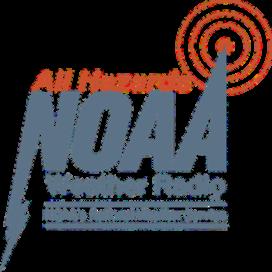
GOING BEYOND THE TEXT
Evacuation
An evacuation order may be given when it is not safe for people to remain in an area and there is time to have them move to safety. The time to get to safety may be limited, so you need to know where you will go and what you need to take with you.
As a hurricane approaches, you should be putting your final preparations in place If you are going to a host home, help them secure their home and bring emergency supplies there.
Evacuating close to home, but outside of the hazard area is the best option. Have a plan for the following situations:
• When you are asked to evacuate outside of your immediate area, you could go stay with family or friends or at a hotel.
• For strong tropical storms and hurricanes, public shelters will be opened. This information will be posted on the Active Alerts page at pasqcamem.wixsite.com/main or announced via the media or social media. Public emergency shelters are available to the general population. There are special needs shelters for people of any age who are electric-dependent or who need minimal medical care Pet-friendly shelters are for dogs and cats only. Their owners must be at the shelter with them to care for their needs. The shelter listing is updated on an ongoing basis to keep you informed about which ones are open for that evacuation If you plan to leave the area as a hurricane approaches, leave days in advance of the predicted landfall to avoid crowded roads, filled hotels and canceled flights.
For large events, like hurricanes, many people want to leave the area altogether If you do plan to do this, here are some key points to keep in mind:
• Other counties may be evacuating, too, and what is normally an hour drive may take you much longer You may need to consider leaving when a watch is issued (36 hours in advance of impact) or sooner. Flights may be canceled or hard to find.
• Hurricanes may end up impacting the area you are headed to. Watch forecasts frequently to monitor for any changes.
• Know where you will go. Plan to stay with friends or family or in a hotel outside of a hazard area
• Ensure your car is in good working condition and filled with gas. Gas may be hard to find
along the evacuation routes, or lines may be very long.
• Prepare for delays in getting back to the county and your home after the event.
• Monitor drivenc.gov for up-to-the-minute, realtime traffic conditions and incident information for the State of North Carolina.
Personal vehicle
If you will be evacuating, the most convenient way to go is to be able to pack up your car and drive to your destination. Remember to take your emergency kit with you so you have what you need for all the people/pets included in your plan.
Verticalevacuation Public transit
In some cases of flooding, it may be necessary to move to higher areas within your house. It is not recommended to stay in your home if it is vulnerable to storm surge from hurricanes, even if you live in a high-rise building. If you find yourself in a situation where you must vertically evacuate, consider the following:
• Shut off water service, gas service and electricity to your home.
• Move to the second floor or higher if needed.
• Stand on top of a counter or substantial piece of furniture to stay above the rising water.
• If you must go into your attic, take an axe or something in case you need to break through the roof.

If you need transportation assistance from someone else, make sure you plan for this early on For tropical storms and hurricanes, drivers will need to be off the roads and seek their own safety well before a storm impacts us. Inter-County Public Transportation Authority (ICPTA) will run buses during an evacuation, although some routes could vary from their regular schedule. Check for updates at icpta.net
• Rides are free during an evacuation and there are transfer stations to help you get to a shelter, if needed.
• Pets are allowed on the buses, but they must be in a crate.

Outofthearea
Locally
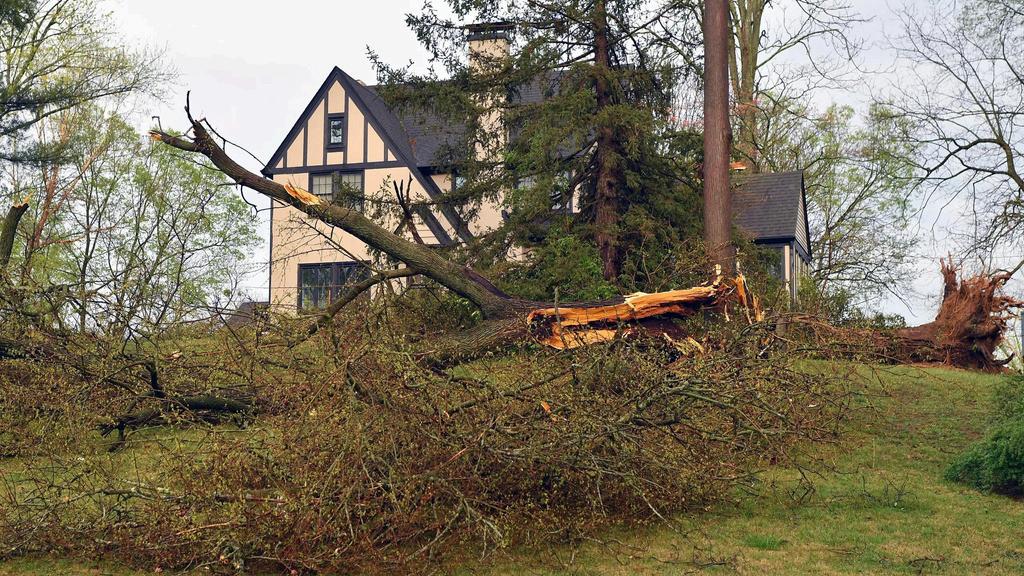
HighWinds Tornado
Tropicalstormforcewinds(35mphorgreater)andhurricaneforce winds(morethan74mph)cancausewidespreaddamage.People livinginmobileandmanufacturedhomesandpeopleonlifesustainingmedicalequipmentthatrequireelectricitycanbevulnerable tohighwinds.Thestrongerthestorm,themorelikelystructural damageswilloccurfromhighwindsthatcanproduceflyingdebris, breachstructureopeningssuchaswindowsanddoors,ortopple mobilehomesthatarenotanchoredproperly.
Protectivemeasuresforhighwindsmayinclude:
•Hardening or protecting your roof, doors (including your garage) and windows from wind damage.
•Signing up for the Special Needs Program at pasqcamem.wixsite.com/main/special-needs-registry-signup for residents of all ages who are dependent on electricity or require medical assistance such as oxygen or assistance with routine care.
•Evacuating to a safer location not in the evacuation area or to a stronger structure when an Evacuation Order is given.
•Sheltering in place when conditions are no longer safe to drive around.
Though newer mobile homes may be built to higher wind codes, surrounding homes may not be. Mobile homes are vulnerable to flying debris/trees and, if not anchored properly, can become dislodged.

Severe Thunderstorms
A tornado is a violent windstorm characterized by a twisting, funnelshaped cloud. It can be spawned by a thunderstorm, a cold front moving into the area or as a result of severe weather associated with hurricanes. Tornadoes can happen with only a few minutes’ notice, so having a weather radio or signing up for CodeRed alerts to your cellphone could save your life.
Youcanprotectyourselfby:
•Conducting an annual tornado safety drill with your family or workplace
•Identifying a safe room in an interior windowless room
•Practicing your plan and being ready to put it into action when you receive a tornado warning
For more information about tornado safety, go to the National Weather Service website at weather.gov/ safety/tornado
Special Needs Registry
Severe thunderstorms are storms that are capable of producing hail that is an inch or larger or wind gusts over 58 mph. Hail this size can damage property such asplants,roofsandvehicles. Windthisstrongcanbreak off large tree branches, knock over trees or cause structural damage to trees. Some severe thunderstorms can produce hail larger than softballs or winds more than 100 mph. Thunderstorms also produce tornadoes and dangerous lightning. Heavy rain can cause flash flooding.
•Securing outdoor furnishings or items You can protect yourselfby:
•Finding interior spaces to shelter in during the storm
If you or someone in your family has a special need that will make responding to an emergency difficult, we need to know. Please sign
Special
TheSpecialNeedsRegistryshouldbeconsideredstronglyforallpeoplewhohavespecialmedicalneeds(ie oxygenorlifesupportsystemsthataredependentuponelectrical power)orhavephysicaldisabilitiesthatwouldmakeitdifficulttoevacuateindependentlyiftheneedarose Theregistryiscompletelyvoluntaryandeligibleindividualsneedonly completetheregistrationformandreturnittotheEmergencyManagementOffice.Formsareavailableonlineatpasqcamem.wixsite.com/main
up for our
Needs Registry
Additional Hazards
Be aware, prepare, and act when it happens.

Lightning
• Avoid open high ground and isolated large trees.
• Avoid water swimming pools, lakes and rivers, beaches and boats.
• Seek shelter inside a building or an automobile but not a convertible or golf cart.
• Stay away from doors, windows and metal objects such as pipes and faucets.
• Stay off corded telephones and away from electrical devices.
www.weather.gov/safety/lightning
Extreme Heat
• Find an air-conditioned space.
• Avoid strenuous activities.
• Wear light clothing.
• Check on family members and neighbors.
• Drink plenty of water.
• Watch for heat cramps, exhaustion and stroke.
• Never leave people or pets in a closed car.
weather.gov/safety/heat

Epidemic, Pandemic
• Quarantine.
• Practice social distancing.
• Wear a mask.
• Get tested if you think you’ve been exposed.
• Get vaccinated, if possible.
• Seek treatment from your doctor.
dhs.gov/epidemicpandemic
Extreme Cold
• Keep space heaters away from other objects
• Move animals to sheltered areas.
• Wear multiple layers of clothing.
• Have on hand extra food, water, medicine, and other needed supplies
• Check on family members and neighbors.
• Watch for signs of frostbite and hypothermia
ready.gov/winter-weather
Fire
• Install smoke alarms and carbon monoxide alarms.
• Have a fire evacuation plan.
• Be safe around backyard grills and firepits.
• Observe restrictions on fires during dry seasons.
• Visit the National Fire Protection Association website at nfpa.org/public-education.
Wildfire
• Use firewise.org, practices around your home.
• Shelter in place for respiratory issues.
• Evacuate if there is a threat of fire spreading.
• Visit the National Weather Services website at weather.gov/safety/wildfire.
Winter Weather
• Stay off roads is at all possible. If trapped in your car, then stay inside.
• Limit your time outside. If you need to go outside, then wear layers of warm clothing.
• Watch for signs of frostbite and hypothermia.
• Reduce the risk of a heart attack by avoiding overexertion when shoveling snow and walking in the snow
• Keep your gas tank full ready.gov/winter-weather

BeAware.BePrepared. BeAware.BePrepared.




Cyber Incident Geological Hazardous Materials Incident Terrorism or Attacks in Public Places
Cyberattacks involve computers, networks, information, or services that affect daily operations on a large scale. These attacks can cause loss of money or the theft of personal, financial and medical information. Those who work in cybersecurity put safeguards in place to prevent, detect and respond to these threats.
Protective measures may include:
•Regular maintenance of computer and online devices for security and use of strong passwords or even two-step verification
•Monitoring of your bank and credit accounts, or if you are a business, monitoring your system for theft of your client’s information.
•Disconnecting from the internet and working with computer experts or even law enforcement to report concerns.
See the Federal Emergency Management Agency for more information on cybersecurity and how to protect yourself against cyberattacks, ready.gov/ cybersecurity
Sinkholes are a geological occurrence that can happen in North Carolina. Sinkholes are caused by a collapse of near-surface ground due to the formation of cavities or fissures. Sinkholes can form in minutes or over the course of years. It is important to note that not all holes in the ground are real sinkholes. Extended periods of drought and/or inland flooding could lead to more sinkholes due to changes under the surface.
Protective measures may include:
•Having the area assessed by a certified home inspector or foundation specialist.
•Leaving your home or the area if the sinkhole poses a risk to the structure.
For more information on other Geologic Hazards, visit deq.nc.gov
A hazardous material is any substance that poses a threat to humans, animals or the environment – usually it is a biological, chemical or radiological hazard. Hazardous materials can produce an array of effects on humans, animals, and the environment with both short-term and long-term impacts. Hazardous materials are regulated within the United States by a variety of agencies at the federal, state and local level. A hazardous materials incident can occur practically anywhere, as these incidents can occur anywhere during the production, transportation, storage, and/or use of hazardous materials. Depending on the hazardous material and the conditions present, harmful effects may be isolated to the immediate vicinity or may cause impacts for many miles.
Terrorism is the unlawful use of force and violence against persons or property to threaten, or coerce, a government, the civilian population, or a segment of the population for political or social gain. The effects of terrorism can vary from loss of life and injuries to property damage and disruptions in services such as electricity, water supply, public transportation and communications.
Types of attacks can include:
•Active shooter: Individuals using firearms to cause mass casualties
•Individuals using a vehicle to cause mass casualties.
•Individuals using homemade bombs to cause mass casualties.
•Other methods of mass attacks may include knives, fires, drones or other weapons
Protective measures may include:
Protective measures may include:
•Sheltering in place.
•Evacuation.
•Decontamination if you have been exposed to the hazardous material.
• Reporting suspicious activity to local law enforcement.
• Training the community about recognizing acts of terrorism and how to report them.
• See the Department of Homeland Security, dhs.gov, for information on types of threats to report. GOING BEYOND THE TEXT

See the Federal Emergency Management Agency for more information on Hazardous Materials Incidents, ready.gov/hazardousmaterials-incidents.
Static electricity is a fixed electric charge that is built up on a material. A common example of static electricity is the slight electrical shock that we can get when we touch a doorknob during dry weather. The static electricity is formed when we gather extra electrons, (negatively charged particles, which we rub off carpeting) and they are discharged onto the doorknob.
Try this: Rub a wool (not acrylic) cap on your hair (on a dry day). This removes some of the electrons from your hair, giving each hair a slight positive electrical charge. Like charges repulse one another, so each hair resists the other hairs. The result is your hair will stand straight up on your head.
Did you know that static electricity and lightning are both forms of energy?

Shockingenergy
MAKE A PLAN
Prepare your home
If you are doing repairs or renovations to your home, consider strengthening your home against wind and water intrusion. There are four critical areas: roof, windows, foundation and garage doors. Learn how to mitigate at readync.gov/planand-prepare/protect-your-home
Prepareyourcondo
If you live in a condo, understand what your responsibility is and what the responsibility of the condo association is when it comes to insurance and mitigation measures.
•Ensure you bring in all items from your porch/balcony before the storm.
•If you live in an evacuation zone and are ordered to evacuate, you need to leave. Even if you live on a floor that is above the expected surge, your building and the surrounding area will be impacted, and it may be days before anyone can get to you.
•When you return to your building, you may need to use the stairs, as the power or the elevators may not be in service.
•Fire safety systems such as sprinklers may not be working after an event, especially if there was a drop in water pressure.
Onceyouknowyourrisk,youcanmakeaplanforwhatyouwilldoifone ofthesehazardsoccurs.Yourplanshouldincludeeveryoneinyourfamily: children,peoplewithspecialneedsandyourpets.Youcanalsoinclude yourneighbors,friendsorextendedfamilyinyourplan.
Prepareyourboat Prepare mobile homes
Mobile homes, manufactured homes and recreational vehicles are not sturdy enough to withstand the strong winds of a hurricane.
You can strengthen your home, but you still must leave your home when an evacuation order is given in Pasquotank or Camden County.
To strengthen your mobile home:
•Add anchors and straps if needed.
•Replace rusted anchors and connections.
•Tighten straps
•Fix wood rot and termite damage at connections, joists and trusses.
Before you evacuate:
•Place shutters/plywood over windows.
•Remove loose items from around your unit.
•Lower TV and radio antennas.
•Lower/remove awnings
•Elevate belongings if your park often floods
•Shut off power and/or breakers.
Prepareyouryard
Getting your yard ready to weather the storm can help keep you and your home safe High winds can turn even the heaviest items into deadly projectiles that can break through your windows, doors and even walls.
To prepare:
•Properly prune trees and shrubs before any storms threaten. Do not leave piles of branches that can become missiles in high winds.
•Keep your gutters and downspouts clear and in good working order
•Replace rock/gravel with lightweight mulch.
•When a hurricane warning is issued, bring in all yard items such as furniture, toys, bird baths/ feeders and barbecue grills.
•Do not drain your pool Superchlorinate the water and turn off all electricity to the pool for the duration of the storm.
•For more information, see the NC Trees and Storms webpage at ncufc.org/nc-treesstorms.php
•Keep insurance up to date.
•Create a hurricane plan for your boat and file a copy with the marina operator.
•Take a photographic inventory of your boat and its contents.
•Purchase and stow a mooring line - it should be about twice the thickness of normal line. Allow extra length for tide and storm surge.
•When a storm is approaching, remove loose items on the deck and store them on land.
•Shut off fuel lines at the tank.
•Keep batteries charged; make sure bilge pumps are operating properly.
•Secure hatches and doors
•Use several cleats to distribute the load on the boat.
•Use chafing gear, such as a reinforced radiator hose, where lines will rub for protection – several feet on each side.
•Disconnect electric, water, fuel and other dock connections.

Landstorage
•Store boat and trailer in a secure, covered building, such as a garage, if possible.
•If left outside, secure using ground hooks and straps
•Put wooden blocks between trailer frame and springs for extra support with added weight.
Anchoredstorage
•Anchor on the lee side of protective land rather than mooring to a dock.
•Use two anchors and no stern anchor.
•Line length should be six to nine times water depth for storm surge shift.
•Keep batteries charged and bilge pumps operating properly.
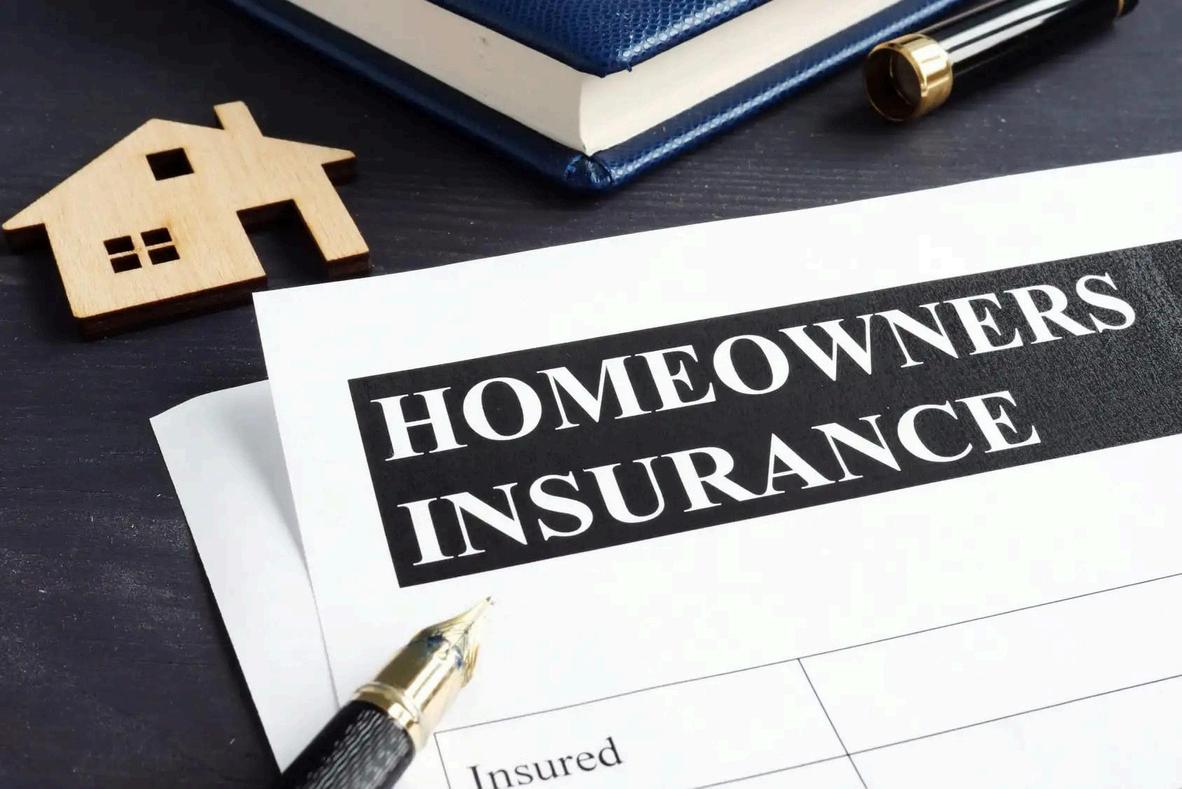
CheckYourInsurance
Most forms of disaster assistance require a specific declaration from the President. This is not always offered after a disaster, and it often comes in the form of loans that must be repaid. Having the proper insurance policies means that coverage and assistance is available regardless of disaster declarations
Property and casualty insurance covers your belongings and also provides you with liability coverage in case you are found at fault for injury or property damage in an accident. If you own property, such as a home, rental property, boat or business, ask your insurance agent about the options for insuring that property against financial loss.
•Understand your policy, coverages, deductibles, exclusions, and responsibilities after a loss and the statute of limitation for filing a claim.
•Loss Assessment coverage is an option that you can add onto your homeowners or condo insurance policy. This coverage helps protect you if you live in a shared community and are responsible for a portion of damage or loss in a common area
•Loss of Use, also known as Additional Living Expense, protects you if you must live somewhere else while your home is being repaired. Most flood insurance policies do not cover Loss of Use.
•Take photos or video and inventory your property. You will need this if you have to make a claim. Make sure you have all of your important documents together.
•Back your photos and documents up electronically using cloud-based storage.

•Takephotosorvideoofthedamagetodocument yourlossesforyourinsuranceclaimbeforeyoumove anydebrisorremovedamagedbelongings.
•Makealistofdamagedcontents.
•Fileyourinsuranceclaimspromptly.Therearetime limitationsonsubmittingclaimswithmanyinsurance companies.
•DonotsignanAssignmentofBenefits.Insome states,there’sarapidlygrowingscaminwhich someunscrupuloushomerepairvendorspressure homeownerstosignawaytherightsandbenefitsof theirinsurancepoliciesasaconditionofperforming work.Thispracticehasledtogrosslyinflated claimsandanexplosionofAssignmentofBenefit lawsuitsagainstinsurers,whichisdrivingupthe costofhomeowners’coverageforconsumers.
•From homeowners insurance to commercial insurance for your business, many restoration companies offer special or “preferred” programs for clients that contract prior to hurricane season for their services. Often, this includes a no-cost evaluation to determine the specific risks and needs associated with your property.
•Establishing this relationship during “blue skies,” or prior to hurricane season, ensures you will be able to secure the assistance you need after sustaining a loss from a storm. Once the storm has hit, these companies are overwhelmed with calls requesting bids for service These “preferred” programs not only secure you as a client but can also protect you from the increase in cost due to the demand for restoration service throughout the county.
•In addition, restoration companies are familiar with the insurance claims process and work with insurance companies regularly.
•It is important to confirm the company you contract with is licensed, bonded and insured.
•Disaster Safety, disastersafety.org
•Federal Alliance for Safe Homes, flash.org
•Florida Division of Emergency Management’s Hurricane Retrofit Guide, apps.floridadisaster. org/hrg
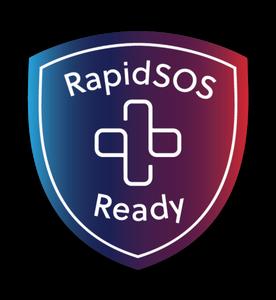
Aftertheevent: Beforetheevent: Disasterrestorationcompanies: Retrofitguidesandinformation: Protect yourself and your loved ones. 911reliesonyourabilitytoclearlyarticulatecriticalinformationsuchaspre-existinghealthinformationinanemergency.Togetherwith publicsafetyandorganizationscertifiedasRapidSOSReady,RapidSOShascreatedtheworld’sfirstemergencyresponsedataplatform thatsecurelylinkslife-savingdatafromconnecteddevicesorprofilesto911andfirstrespondersinanemergency. NowindividualscanbeRapidSOSReadybycreatinganEmergencyHealthProfile,providingfirstresponderswiththecriticalinformation
CreateyourfreeEmergencyHealthProfiletosendlife-savinginformationto911andfirstrespondersinanemergency. https://www.emergencyprofile.org
theyneedtocareforyouinamedicalemergency.Duringtheseuncertaintimes,takingthisimportantstepcanhelpprovidethepeaceof mindofknowingthatinanemergencyyouandyourlovedoneshavethemosteffectiveresponsepossible.
BuildYourKit
Basic Supplies
Sanitation:Wipes,antibacterialhandgel,soap,toiletpaper, hygienesupplies,femininesupplies,diapers,clothface covering.Enoughforeachfamilymember.
Water:Atleastonegallonofwaterperpersonperdayfor drinking,andanadditionalonegallonperpersonperdayfor hygieneandcooking,forsevendays.
One-week supply of nonperishable food that does not require cooking. For example: dried fruit, canned tuna fish, peanut butter,etc.Remembercomfortfoods.
Non-electriccanopener.
Medicationsandcopiesofprescriptions.Askyourpharmacist foraprintout
Raingear
Flashlightorlantern
Battery-operatedorhand-crankradio
Extrabatteries
First aid supplies: Over-the-counter pain reliever, anti diarrhea medicine, laxative, antihistamine, anti-itch cream, antiseptic
Insectrepellent
Extra batteries for medical devices such as hearing aids
Eyeglassesandextracontactlenses
Extrabottledoxygenifneeded
Smallgeneratorforelectrically-dependentequipmentlikean oxygenconcentratorornebulizer.
CashforwhenATMsareoutofservice.Smallbillswillmake purchasingeasier.
EmergencyAccessPermit(forbarrierislands).
Books,cards,boardgamesforentertainment. Fulltankofgasinvehicle.
Extragascans.
Cellphone with charger, extra battery backup, solar charger. Emergency contacts in mobile device and printed for backup Informationdownloadedtoyourmobiledevice(contacts, maps)
Apapermap
Paperandpencil
Sunscreen
Important Documents
Takephotosofyourdocumentsforbackup.
Putpapercopiestogetherinasealedplasticbag. Driver’slicenseorIDcard
EmergencyAccessPermitforbarrierislandresidentsand businesses
SocialSecuritycard.
Importantnumbersandemergencycontacts.
Medicalrecords:Pharmacyprescriptionrecord,doctors, medications,dosages,bloodtype.
Insurancepoliciesforhome,health,flood,auto,renters
Titlestohouse,carsandboats
Paystubsfordisasterassistanceeligibility.
Householdinventoryforinsuranceclaims:Photoorvideo documentationstoredonline.
Otherirreplaceablepapers:Birth,marriage,divorce,deathand adoptioncertificates;passports;militaryrecords;wills,trust documents.
Accountnumbersforbank,creditcards,savingsand investments.
AllHazardsPreparednessGuide
Assembling an emergency kit now can help you make sure you and your family have what you need in an emergency. To simplify the process, Pasquotank-Camden Emergency Management recommends that you keep these items ready to go in case you need them on a moment’s notice.
Basic Supplies for Babies
Diapers
Wipes
Clothing.
Plasticbags
Formula
Sterilizedbottles. BottledWater
Pacifier
Comfort items.
Blanket.
Thermometer
Basic Supplies for Pets and Service Animals
Enoughpetfoodandwaterfortwoweeks
Identification/chip(remembertoupdate).
Countylicense.
Immunizationrecords
Photo
Collarandleash
Medicationsfortwoweekswithinstructions.
Toys/blanket.
Catlitter,pan,scoop.
Plasticwastebags
Disinfectant
Papertowels
Carrierorcrate.
Newspaperorotherlining.
Supplies to Add If You Go to a Host Home or Hotel
Pillowandblankets.
Airmattress,sleepingbag,floormatorotherasneeded Foodandwater.Findoutfromthehostwhatyoucanbring, includingperishablefood.
Paperplates,plasticcupsandutensils
Completechangeofclothingforseveraldays
Checkwithyourhosttoseewhattheyneed.
Public Shelter – General
Wearablemedicalalerttag.
Blanket,pillow,cot,foldingchairortwin-sizeairmattress. Completechangeofclothingforseveraldays
Specialdietaryitems(sugar-free,lowsodium,gluten-free, etc )withcanopenerifrequired Commonfoodandwateris supplied
Flashlight. Earplugs.
Eyemask/coveringforsleeping. Battery-poweredfan. Battery-poweredradio
Public Shelter - Special Needs
Inadditiontobasicsupplies:
Any durable medical equipment or supplies you may needsuchas:
Portableoxygen
Wheelchair,walkerorcane.
Oxygenconcentrator.
Nebulizer.
Medications in the original container (two-week supply)
Personal hygiene: Toothbrush, wipes, soap, hairbrush,adultdiapers
Writteninstructionsorordersregardingyourcare
Petemergencykit Petswillnotbestayingwithyou
Supplies to Add If You Shelter in Place (or When You Return)
Twoweeksoffluidstodrinkandnonperishablefood thatdoesnotrequirecooking.Forexample:dried fruit,cannedtunafish,peanutbutter,etc Remember comfortfoods
Paperplates,plasticcupsandutensils
Coolerwithice Makeextraiceinplasticbagsand plasticfoodstoragecontainers,andkeepthoseinthe freezertokeepfoodcoldlonger.
Insectrepellent.
Sunscreen.
Tarpswithropeorelasticcord.
Whistletosignalforhelp
Tools:Wrenchtoshutoffwater;utilityknifeforsheeting; andducttape,hammerandnailstomaketemporary repairs
Dustmask.
Sheetsofplasticandducttapetosealwindowsand doorsiforderedtodoso.
Matchesorlighterinwaterproofcontainer.
Largegarbagebags
Portabletoilet:Useonefromaboatorcamper,or makeoneusingafive-gallonbucketwithlid,trashbags, chlorinebleach
Householdchlorinebleachwithmedicinedropperto disinfectortreatwater.Donotusescented,colorsafe orbleachwithaddedcleaners.
Extragasforageneratorandsomewheresafetostoreit. Extrapropaneorcharcoalforoutdoorgrill
Battery-poweredfan
Cameratotakephotos/videoofdamage
Disinfectanttopreventmold
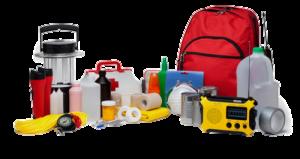
Inadditiontobasicsupplies: Inadditiontobasicsupplies:
Akitforhome
PetDisasterPreparedness
When disaster strikes, it is vital that you and your family stay safe – and that includes your pets. By having a plan and practicing it, you can be prepared to act at a moment’s notice should a major storm come your way. Here are some ways to keep your furry family members safe, courtesy of the Humane Society of the United States:
Preparing for your pets
Pets are an important part of your family, and it will be up to you to plan for them.
• Make sure they are up to date on their vaccinations and their county license is valid.
• Microchip your animal in case you get separated and be sure to update your contact information if it changes
• Take a photo of you and your pet together. Keep it with your important documents and on your phone.
• Build a pet emergency kit.
• If you must evacuate, take your pet with you. Keep them on a leash or in their crate
• Wherever you end up evacuating to during the event, ensure your destination is pet-friendly.
Before the storm
• Microchip pets or put a tag on their collar with your name, address and cellphone number.
• Have a plan established detailing which family member is responsible for your pet’s needs (who will grab the pet, the food, water, emergency kit, carrier, etc.).
• Know a safe place where your pets can go if you need to evacuate or seek shelter.
• Evacuate your family and pets as early as you can and remember to take your disaster preparedness kit for your pets (First Aid kit, leashes, and pets’ carrying cases, bowls, sanitation
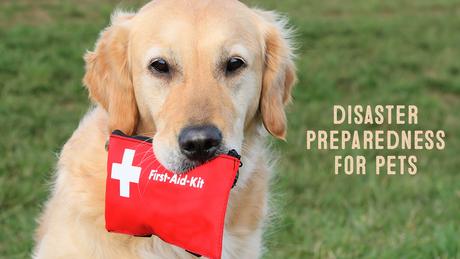
materials, chew toy, minimum three days, ideally 7-10 days of food, medications, water, your veterinarian’s contact information, a photo of your pet)
• Bring pets inside; bring outdoor animals inside with a carrier ready that is large enough to turn around and lie down comfortably.
• If your family must evacuate, take your pets with you.
During the storm
• Choose a safe room for riding out the storm an interior room without windows.
• Stay with pets. If crated, they depend on you for food and water. Don’t leave pets in vehicles.
• Keep your emergency kit in that room with you (food, water, litter, meds, etc.).
• Know your pet’s hiding places. That’s where they may run; keep them with you.
• Secure exits and cat doors so pets can’t escape into the storm.
• Do not tranquilize your pets. They’ll need their survival instincts should the storm require that.
After the storm
• Make sure the storm has fully passed before going outside and assess damages before allowing children or animals out.
• Keep dogs on a leash and cats in
a carrier. Displaced objects and fallen trees can disorient pets and sharp debris could harm them.
• Give pets time to become reoriented. Familiar scents and landmarks may be altered and cause a pet to become confused or lost.
• Keep animals away from downed power lines and water that may be contaminated.
• Your pet’s behavior may change after a crisis, becoming more aggressive or self-protective. Be sensitive to these changes Animals need comforting, too
GOING BEYOND THE TEXT
Thirty-second warning
The 30-30 Rule determines the threat of lightning to you Start counting as soon as you see a lightning flash and keep counting until you hear the thunder associated with the flash. Sound travels at about five seconds per mile How many miles away is the lightning if you hear thunder 30 seconds after you see the strike?
Did you know that lightning is a form of energy?

Prepare Your Business
It is critical to have a business continuity plan so that you can resume offering your services to the community as soon as possible after a storm.
• Get help with business disaster planning by contacting Carolina Small Business Development Fund online at carolinasmallbusiness.org or at 919-8031437
• Make a plan for doing business without power: alternate locations, cloud-based storage of your documents, and creating an employee, vendor and key client communication plan.
• Ensure your employees are prepared and know what the plan is to report back to work after the storm.
• Review your business insurance coverage.
• Elizabeth City downtown provides information and resources to help those in the tourism industry before, during and after a disaster For information, call 252-338-4104
• Once a disaster has been declared, disaster loan assistance may be available. Elizabeth City-Pasquotank County Economic Development can help businesses with applications for business emergency bridge loans and loans from the U S Small Business Administration For information, call 252-338-0169 (Pasquotank County) 252-338-6363 (Camden County)

Pasquotank-Camden Emergency Management Online
Active Alerts, Special Registry Sign-ups, Free Community Alerts Sign-up, Know Your Zone, planning resources and much more available online!


Special Registry Programs
Pasquotank and Camden Counties have several programs in place to ensure assistance is available during an emergency. Learn more about each of these programs at pasqcamem.wixsite.com/main/special-needs-registry or by calling (252) 335-4444.



The Pasquotank-Camden Special Needs Program is voluntary for individuals with health or medical conditions who have NO alternative other than a public shelter or may need assistance during an evacuation.
RapidSOS has created the world’s first emergency response data platform that securely links life-saving data from connected devices or profiles to 911 and first responders in an emergency.
PROJECT LIFESAVER is a program offered by law enforcement and other emergency responders in 41 states, using proven radio technology and specially trained search and rescue teams, to find citizens enrolled in the program when they become lost.
Visit us online
STAY INFORMED
Takingprotectivemeasures
Knowingwhensevereweatherorahurricanemaystrikeis important.Withtornadoesyoumayhaveonlyminutesaftera warningisissued.Fortropicalstormsandhurricanes,youmayhave d
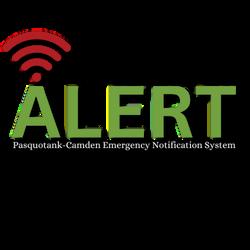

Download the App

https://pasqcamappregroupcom/contacts/sign up
HurricaneWatch
Forty-eight hours ahead of the onset of tropical stormforce winds:
• Fill vehicle gas tank.
• Get cash, secure papers and valuables.
• Refill medications.
• Fill containers and tubs with water, even if you are evacuating. You may need it when you return.
• Secure yard equipment and furniture.
• Shutter your windows
• In case your area is ordered to evacuate, secure your home so that you can be ready to leave when the order is issued.
• If you are registered for a special needs shelter and will be getting transportation, be sure you have everything you need for your emergency kit., See the checklist on page10.
• Be prepared for an evacuation order to be issued at any time.
• Check news sites and the Pasquotank-Camden Emergency Management Facebook page for updates to evacuation zones and shelter information
HurricaneWarning
Free Mobile Apps

FEMAmobileappallowsyouto receivereal-timeweatheralerts, sendnotificationstolovedones,locate emergencyshelters,andmore.
First Aid: American Red Cross

WhiletheFirstAidappdoesn’t specificallyprepareyoufornatural disasters,itdoescontain informationaboutwhatto doforaninjurythatcould resultfromone.Turningon LocationServiceswillenable theapptofindyournearesthospitals.
Hurricane: American Red Cross
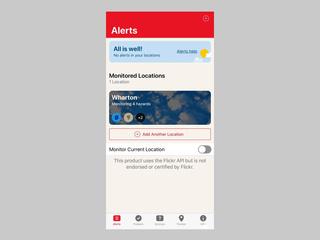
Thirty-six hours ahead of the onset of tropical storm force winds:
• Stay tuned to local news and get your weather radio ready.
• Complete final preparations to evacuate or to shelter in your home.
• If your plan is to travel out of the area and you can leave at this point, go. You can expect traffic to get heavier as the hurricane nears
• If you are registered for a special needs shelter and will be getting transportation, be ready to leave. Emergency personnel will begin pick-ups shortly after an evacuation order is issued
• If you are going to a host home, assist with home preparations and bring your emergency kit there.
• You do not need to wait for an evacuation order. Just remember: If you plan to evacuate to somewhere else in North Carolina, there is no guarantee that area will not be hit by the storm if its path changes.
• Be prepared for an evacuation order to be issued at any time. Knowing where you will stay is key.

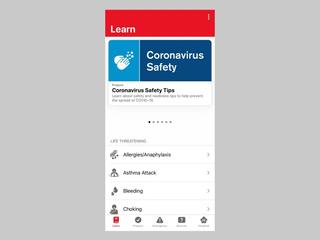
The Hurricane App allows you to monitor specific zip codes for hurricane, tornado, flood, and other warnings. Family members can be added as well, allowing you to keep an eye on loved ones living far away.
Nextdoorisasocialnetworkwhere youcanseelocalnewsandupdates fromPasquotank-CamdenEmergency Managementandotherofficial agencies.ItisavailableontheApple AppStoreandGooglePlay.The service isalsoofferedontheir websiteat nextdoor.com,with optionsforemailandtexts.
Facebook for Pasquotank County: facebook.com/ PasquotankCountyNC
Facebook for Elizabeth City: facebook.com/CityofECNC
Facebook for Camden County facebook.com/CamdenCounty
Facebook for Emergency Management: facebook.com/pasqcamEM
Nextdoor FEMA SocialMedia
1 JUNE Evacuation notices
power/water
Missing children or persons Types of Alerts W ts Text join pasqcamalert
31002 Sign-Up Now!
Lockdown advisories Police activity and updates Viral outbreaks Severe weather warnings Street closures Planned
outages
to
WhatToExpect
There will be a point in time when all evacuations will be over. Winds will continue to gain strength. Once they reach 40 – 50 mph conditions, Fire and Emergency Medical Services will not be able to respond to emergencies. It will be time for everyone to shelter in place.
During the Storm
If floodwater starts coming into your home
Do not go outside and wade through the water Floodwater and storm surge can move very quickly, and live power lines could be in the water outside. Remain inside and stand or sit on something that is elevated off the floor, such as a bed or table. If necessary, evacuate vertically, getting onto your roof as a last resort.
If there is a tornado or high sustained winds ...
Take refuge in your safe room — an interior room, closet or hallway on the lowest level of your home. The center of your house is the safest.
• At a warning, go to your safe room.
• Lie on the floor under a table or other sturdy object if you cannot make it to a safe room.
• Curl up and cover your head with a mattress or other item if available.
If the power goes out for six hours ...
Ifthereisfoodintherefrigerator,moveperishable foodsintoanice-filledcooler.Putathermometerin thecoolertomakesureitstaysbelow40degrees. Meatsandotherperishablefoodscanstayabout 40degreesfortwohourswithoutspoiling.
If the power stays out for two days ....
If there is food in the freezer, it can be stored safely for two days if you keep the freezer door shut. Once the storm passes, cook any
unspoiledfoodoutsideandconsidersharingwith yourneighbors.Fromthispointforwardyouwill neednon-perishablefood.Getmoreinformation onfoodsafetyatfoodsafety.gov/keep-foodsafe/food-safety-in-disaster-or-emergency.
If the water supply is affected ...
It is always possible that the drinking water supply could be affected during a disaster. Monitor the news for boil water advisories which mean there is a possibility of contamination. In this case, you should be prepared to disinfect the water
• Boil Bring a pot of water to a rolling boil for one minute to ensure bacteria, viruses or parasites are gone.
• Bleach Add 1/8 teaspoon of unscented bleach per gallon of water and let stand for 30 minutes; bleach should contain 5.25 percent sodium hypochlorite. This is less effective than boiling but will work if there is no way to boil water.
• If water is out, use your emergency supplies.
If there is a sewer outage ...
If a sewer outage is announced, do not flush your toilet Powered sewer lift stations may be down, which could cause a sewage backup in your home. Use a portable toilet, like one used on a boat or camper, or set one up by using one of the following methods:

• Five-gallon bucket - Line with heavy-duty trash bag and use household bleach as a disinfectant Make sure it has a tight lid.
• Toilet bowl - Turn off your outside water supply first and flush once to empty before lining with a trash bag.

• Do not use cat litter. It should not be put into toilets or flushed. It may clog your pipes. Once given the OK by officials, dispose of the emergency toilet’s contents into your household commode. Thoroughly sanitize your emergency toilet with bleach before storing or disposing.
If phone, cable and cell service are down ...
• Use a battery - Solar or crank-powered radio. Radio broadcasts are usually the last communication source to go down, and AM stations can broadcast longer than FM Severe weather alerts are also transmitted through the NOAA Weather Alert Radio.
• Mobile text messaging - Texting often works when other services do not. If your phone’s digital clock works, then you can send and receive texts Social media and mobile apps may be working as well.
• Keep your phone and other devices charged. Use your back-up battery charger and solarbattery chargers. Use a vehicle to charge your devices.

Open your message App 1. Enter 911 in the "TO" field 2. Enter your LOCATION 3. Enter a short detail of the emergency 4. Hit Send 5. To Text 911 Did you know...
AFTERTHESTORM
In the days following a hurricane, crews will be busy clearing roads, responding to emergency calls and assessing damage. You must rely on what you have stored for food, medications and entertainment.
• Only call 911 in the case of a police, medical or fire emergency.
• If you need information, call the Emergency Operations Center at 252-335-4444.
• Shelter in place Do not attempt to travel and be careful when going outside of your home
• Take photos of your property for insurance and immediately begin taking steps to reduce flood damage to your home.
• Check on your neighbors. Share food and take care of each other.
• Do not set objects of any type on the stove while the power is out.
When will power be restored?
Power companies focus on restoring power in a sequence:
• Public safety situations
• Transmission, substation equipment and main distribution line
• Essential facilities
• Distribution lines
To report an outage or view current outages:
Dominion Energy: 866-366-4357
Albemarle Electric: 800-274-2072
Elizabeth City Electric: 252-335-2196 become uncontrollable when driving on damaged, debrischoked roads
Drivingsafetytips
• Traffic lights may be inoperable or malfunction. If the traffic lights are not working, treat an intersection as a four-way stop sign.
• Do not drive through standing water.
• Match your speed to road conditions. Cars can quickly
• Visibility may be limited Increased traffic on congested roadways and large trucks can obstruct your line of sight.
• Maintain a safe distance from the car in front of you.
• Traffic patterns may be shifted in work zones; always obey posted work zone speed limits.
• Constantly scan for pedestrians who can quickly lose their footing
• Obey all “road closed” signs Just because you can’t see road damage doesn’t mean it is safe.
• Not all damaged or destroyed road signs have been replaced; be prepared to yield to a pedestrian or another driver or to stop unexpectedly.
• Know where you are going and give yourself ample time to get there
• Drive with car lights on and slow down.
Generator safety
• Keep generators in wellventilated locations outside, away from all doors, windows and vent openings.
• Never use a generator in an attached garage, even with the door open.
• Place generators so the exhaust fumes can’t enter the home through windows, doors or other openings in the building.
• Install carbon monoxide (CO) alarms in your home Follow manufacturer’s instructions for correct placement and mounting height.
• Turn off generators and let them cool down before refueling. Never refuel a generator while it is hot.
• Store fuel for the generator in a container that is intended for the purpose and is correctly labeled as such. Store the containers outside of living areas
WhatToDo
• Stay Connected Stay tuned to local news for updates on flooded areas, road closures, and re-entry points.
• Follow re-entry orders and avoid heavily damaged or impacted areas.
• Be aware of areas where floodwaters have receded. Roads may be damaged and could collapse from the weight of a car.
• Stay out of flooded areas and standing water. Floodwaters can contain raw sewage, bacteria, viruses, and other germs that can cause disease or be electrically charged from underground or downed power lines
• Watch for critters such as snakes, raccoons, possums and insects that may have “moved” into elevated areas.
• Photograph and list all damaged or lost items including their age and value where possible. Take photos of water in the house. Adjusters need evidence of the damage to prepare your estimate.
• File your flood insurance claim now.
• Remove wet contents immediately to prevent mold. Wet carpeting, furniture, bedding, and other items holding moisture can develop mold within 24 to 48 hours. Cut out drywall that got wet.
• Turn off or keep your breaker box off if water rose above power outlets in your home. Power systems may not be stable after a disaster and power may come off and on.
• Look for water marks to show how high the water was as the levels may have gone down before you are able to assess damages
• Clean and disinfect everything that got wet Mud left from floodwater can contain sewage and chemicals.
• Empty your refrigerator and discard any spoiled or questionable food Remove, clean and sanitize shelves, crispers and ice trays Wash the interior of the refrigerator and freezer with hot water and baking soda.
• Service damaged septic tanks, cesspools, pits, and leaching systems as soon as possible. Damaged sewage systems are serious health hazards.
• Prevent mosquitoes breeding by following the 3 Ds: Drain water when possible; Dress in light colors and cover all parts of the body; Defend with DEET, Picaridin or Oil of Lemon Eucalyptus.
• Follow safety tips for using chainsaws, including safety goggles, gloves and protective foot coverings.
• Know when a job is too big to do yourself and contact a licensed, bonded professional
• Throughout the year, regularly inspect and maintain your home and surroundings.
• Keep storm drains near your home clear of leaves and debris, especially before and after a storm. Only rain down the drain.
• Inspect and clear your gutters frequently
• Repair or replace your roof if shingles are deteriorating or missing.
• Repair, where possible, sidewalks, patios, decks and driveways that may have shifted over the years, allowing water to pool close to the home.
Retrofityourproperty
You can strengthen your property against wind and water intrusion by protecting and reinforcing four critical areas: roof, windows, doors and garage doors.
Examplesinclude:
• Add roof straps.
• If you live in a manufactured home, add reinforced anchoring straps to reduce the chance of it toppling over
• Upgrade to hurricane impact windows or use other protective coverings, such as plywood. There are many options available.

• Install gutters with spout extensions and use a splash pad to direct the water away from your foundation. Make sure they are pointed away from your neighbors’ yards and into your grass or garden, not into the driveway
• Install trench drains in your driveway or at your doorway to help collect water and reduce yard flooding
• Raise switches, sockets, circuit breakers, and wiring
• Elevate your equipment, such as water heaters, AC units, etc.
• Install sewer backflow valves Valves, such as backwater or flap, can alleviate wastewater from entering your home if the sewer system becomes overwhelmed.
• Install flood vents in the walls of enclosed storage spaces This helps relieve pressure put on the walls during a flood event and lowers the chance of their collapsing.
• Build with flood-resistant materials.
• The Federal Alliance for Safe Homes offers detailed information on ways to strengthen your home at flash.org. Their YouTube channel features informational videos as well as projects you can do yourself at youtube.com/user/StrongHomes.

GET INVOLVED ConsumerAlert
In a declared state of emergency, it is illegal to sell necessary goods or services at increased prices. If you believe a business or individual is price gouging, call North Carolina Department of Justice, ncdoj.gov/file-a-complaint/price-gouging/, at 919716-6000 or when a state of emergency is not in place file online at ncdoj.gov/complaint. If you do not have phone or internet service, document the activities of the business or individual and report it as soon as you can.
FileInsuranceClaims EmergencyAssistance
After a hurricane, it could take days or even weeks for emergency relief services to be available. Service providers in the county will work with officials and emergency relief organizations from out of the area to provide essentials to residents. When the area is stabilized, long-term recovery begins with business restoration, building repairs and interim long-term housing for those who lost homes In the months that follow, state and federal governments may set up sites to take insurance and financial aid claims such as long-term housing and loans for reconstruction and small businesses.

Food Bank of the Albemarle Is committed to a hunger-free community, working each day with retail donors, farmers, private donors, hunger relief partners and volunteers towards this goal. Visit afoodbank.org/volunteer
The claims process will depend on the type of claim you are filing Contact your insurance agent immediately to report the damage to your property and discuss the next steps. Your insurance agent will assist you in starting the claims.
•Contactyourinsuranceagent.
•Collectinformationyouneedaboutthedamageandclaim.
•Photographsofthepropertyandcontentsbeforeandafteralossarerecommended
•Accompanyyouradjusterwheninspectingthedamagetoyourproperty
•Putyourdifferencesinwriting.
•Keepallreceipts:Receiptsareneededtoreceivereimbursementforyourliving expenses,foritemsyoulost,andforsomerepairs.
KnowYourRights
Criminals may prey on your vulnerability after a storm Know your rights as a consumer and don’t let your eagerness to make repairs leave you a victim.
• Be cautious of anyone coming to your home uninvited and offering to do home repairs.
• Be alert to individuals canvassing your neighborhood in an unmarked van or truck
• Insist on a written estimate and get estimates from several companies
• Be sure the contract or business card has an address, telephone number and professional license numbers.
• Ask for references and check them out.
• Insist on start and completion dates in the contract.
• Do not pay the final balance for work performed until it is completed to your satisfaction.
Contact the North Carolina Department of Justice ncdoj.gov/protecting-consumers/, for more information at 919-716-6000
We work with local organizations and federal authorities. We mobilize where people are hungry and need basic comforts. We provide mobile showers, bottled water, and a clean blanket to anyone in need Visit salvationarmycarolinas org/elizabethcity
Trained and available, Disaster Action Team volunteers are ready to respond to these emergencies, 24 hours a day, 365 days a year. From offering a shoulder to cry on, to meeting any immediate needs for shelter or supplies, to connecting people with long term recovery services, our volunteers ensure that families don’t have to face tough times alone. Go to redcross.org/volunteer
Yourlocalfiredepartmentisalwayslookingforvolunteers. Trainingandequipmentisalwaysprovidedatnocost.Contact yourcloseststationtolearnmore.
You can assist family, friends and neighbors in many ways For example: Help them prepare their properties, get emergency supplies, register for special needs shelters, download the CodeRed app and sign up for CodeRed alerts.



FoodBankoftheAlbemarle LocalFireDepartment SalvationArmy Helpyourneighbor AmericanRedCross
PasquotankCamden Emergency Management
Pasquotank-Camden

Emergency Management is a two-person department available 24/7/365. We work with all city and county agencies to coordinate emergency response plans along with having the responsibility to identify vulnerabilities, effectively mitigate disasters, educate the public, plan for allhazard emergency situations, ensure continuity of government and business, and to facilitate an effective recovery. Pasquotank-Camden EM will coordinate with local, state, and federal agencies, as well as private entities to develop, maintain, and implement the Emergency Operations Plan and manage the Emergency Operation Center.
The mission of Pasquotank-Camden Emergency Management Agency is to ensure, through coordination with County and Local shareholders that our communities are prepared to respond to, and recover from, all natural and man-made emergencies, thereby providing the leadership and support to reduce the loss of life and property through an all-hazards emergency management program of mitigation, preparedness, response and recovery throughout Pasquotank and Camden Counties.
Emergency Management
252-335-4444
Sheriff's Office
252-338-2191
Animal Control
252-331-1500
Central Communications (911)
252-331-1500
Water Department
252-335-2240
Solid Waste
252-335-4105
Emergency Medical Services
252-335-1524
Elizabeth City Police Department
252-335-4321
Elizabeth City Public Works
252-337-6628
Elizabeth City Fire Department 252-338-3913
Sheriff's Office 252-338-5046
Animal Control 252-331-150
Water & Sewer 252-338-1919
Albemarle Regional Health 252-338-4400
arhs-nc org
Sentara Medical Center 252-335-0531
sentara.com
Food Bank of the Albemarle 252-335-4035
Utilitycompanies Stateagencies
Dominion Energy 866-366-4357
Elizabeth City Electric 252-335-2196
Albemarle Electric 800-274-2072
Spectrum 888-369-2408
Century Link 866-963-6665
Piedmont Natural Gas 800-752-7504
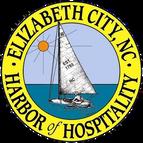

pasquotankcountync.org elizabethcitync.gov camdencountync.gov 252-338-1919 252-338-3981 252-335-0865
afoodbank org North Carolina Emergency Management 919-825-2500 ncdps.gov
North Carolina Highway Patrol *HP or *47 (mobile phone) 919-733-7952
https://www.ncdps.gov
Federalagencies
Federal Emergency Management Agency (FEMA) 800-621-3362 fema.gov
National Hurricane Center nhc noaa gov
National Weather Service/ Wakefield, VA weather.gov/akq
PhotoCredits
CamdenCausewayBridge:BrookeMayo
Thunderstorm:Fox8-Prospect,Ky
Flood:nbcbayarea com
Cyber:oswaldcompanies com
Geological:wtop.com
HazardousMaterials:moxietraining.com
Terrorism:AssociatedPress
Insurance:Einsurance.com
PetDisaster:SupremeSourcePet
Evacuation:CNN-HurricaneMatthew
Credits
Writtenanddesignedby Pasquotank-CamdenEmergencyManagement
andpartiallyreproducedwithwrittenpermissionfrom TheTampaBayTimes
BrianParnell,Coordinator parnellb@co.pasquotank.nc.us
JoshuaWyse,AssistantCoordinator wysej@co.pasquotank.nc.us
252-335-4444(office)
252-335-1777(fax)

EmergencyManagementStaff PasquotankCounty
© Pasquotank-Camden Emergency Management 2024
CamdenCounty

























































